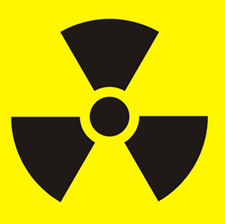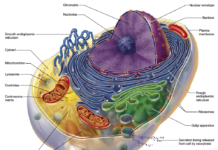Inexpensive Nutrient Offers Protection From Radiation
By Jim English
On June 8, 2002, Westchester County, New York officials began to distribute potassium iodine tablets to thousands of residents living within a 10-mile radius of the nearby Indian Point nuclear power plant. (1) The pills, also known as “KI,” prevent the thyroid gland from absorbing radiation released from nuclear weapons and nuclear power plants if taken within 24-hours of exposure. Following New York’s lead, twelve other states, including Maryland and Vermont, also requested anti-radiation pills from the Nuclear Regulatory Commission to distribute to residents living near nuclear reactors.
Waiting in line with his two young daughters for their free anti-radiation pills, Westchester County resident Joseph Ruffino told the Associated Press that the whole thing was kind of surreal. “It’s hard to believe this is your daily reality these days, but it is.” (2)
The New Nuclear Reality
 More than a decade after the collapse of the Soviet Union the danger of the intentional use of radiation against civilians is greater than at any other time since the end of the Cold War. After a pair of hijacked commercial jetliners toppled the Twin Towers on September 11, 2001, engineers scrambled frantically to reassess the integrity of nuclear power plants. Their report, delivered to a special meeting of the UN International Atomic Energy Agency (IAEA) convened in Vienna on November 1, 2001, stated that the world’s 1,300 nuclear facilities were vulnerable and not hardened to withstand “acts of war,” such as a deliberate attack with a large, fully-fueled passenger jet. This grim assessment led IAEA’s director general, Mohammed ElBaradei, to state that, “There is no sanctuary any more, no safety zone.” (3)
More than a decade after the collapse of the Soviet Union the danger of the intentional use of radiation against civilians is greater than at any other time since the end of the Cold War. After a pair of hijacked commercial jetliners toppled the Twin Towers on September 11, 2001, engineers scrambled frantically to reassess the integrity of nuclear power plants. Their report, delivered to a special meeting of the UN International Atomic Energy Agency (IAEA) convened in Vienna on November 1, 2001, stated that the world’s 1,300 nuclear facilities were vulnerable and not hardened to withstand “acts of war,” such as a deliberate attack with a large, fully-fueled passenger jet. This grim assessment led IAEA’s director general, Mohammed ElBaradei, to state that, “There is no sanctuary any more, no safety zone.” (3)
In response to this threat and follow-up advisories from US Nuclear Regulatory Commission regarding potential terrorist attacks against nuclear power plants, the FBI temporarily closed the air space around all US nuclear power plants in October 2001. (4) Currently the FAA and US military constantly monitor air traffic in proximity to nuclear plants and, while unwilling to expose details that might tip potential attackers, they’are believed to have contingency plans in place for immediate response if a threat is perceived. (5)
“Dirty Bombs”
In addition to attacks against nuclear power plants a new radiological threat in the form of a “dirty bomb” has entered the modern terror lexicon. Unlike standard nuclear devices a dirty bomb uses conventional explosives, such as dynamite, to spread airborne radiation and contamination across populated areas. Particularly disturbing is the fact that the only way to distinguish a dirty bomb explosion from a regular explosion is to wait until high radiation levels are detected.
Also troubling is the fact that dirty bombs don’t require expensive manufacturing facilities or specialized talents to assemble. In fact, the hardest part in building a dirty bomb is acquiring the radioactive material. (6)
Dirty bombs are not weapons of mass destruction, but weapons of mass disruption. “Claims of thousands of deaths are likely to be exaggerated, but there would be a severe contamination problem and a lot of panic,” says Michael Clark of Britain’s National Radiological Protection Board. (7)
Millions of Unprotected Sources
On June 2, 2002 the IAEA issued warnings about the existence of millions of radiation sources that terrorists could easily turn into bombs. (8) The IAEA also reported that controls to prevent radiological materials from being stolen are weak. Such radiological materials include weapons-grade plutonium and uranium, as well as freshly spent nuclear fuel. Also easily available are cobalt 60, strontium 90 and cesium 137 – lethal radioactive materials used extensively in equipment found in hospitals, factories and laboratories.
And while concerns about unprotected radiological materials in countries such as the former Soviet republics, Pakistan, India and other developing nations is particularly high, Western sources are also doing a poor job of monitoring these lethal substances. According to the IAEA, US companies have lost over 1,500 radiation sources since 1996, and more than half of these have never been recovered. In Europe another 30,000 sources of material are “at risk of being lost from regulatory control,” and up to 70 radiation sources are lost every year. “Security is as good as its weakest link and loose nuclear material in any country is a potential threat to the entire world,” says El Baradei. (8)
How Real is the Threat?
To date the only known attempt by terrorists to set off a dirty bomb occurred in 1996, after Chechen rebels planted a device containing radioactive cesium 137 in a Moscow park. Fortunately, there was no explosion. More recently, on January 1, 2003, Britain’s government confirmed that it had evidence gleaned from documents discovered in the Afghan city of Herat showing that al-Qaeda had successfully constructed a dirty bomb. (9) This report was followed as recently as February 6, 2003, when intelligence sources in the US suggested that al-Qaeda was close to developing a dirty bomb and warned that major attacks could be launched against Western targets within weeks. (10)
Protecting Against a Dirty Bomb?
If authorities have advance warning of a strike on a particular place, they will try to evacuate the population. If time doesn’t allow for evacuation, urging people to hide in basements and other underground spots might save lives.
Following a nuclear or dirty bomb explosion the first immediate priority of local and state authorities will be the evacuation and treatment of the wounded, many of whom will die without immediate medical care. Government and medical guidelines direct that potassium iodide should be given immediately, especially to children, pregnant women, and nursing mothers, to prevent the destruction of the thyroid or the later development of thyroid cancer – the incidence of which rose sharply among survivors of the Soviet Union’s Chernobyl nuclear disaster, especially in children. (4) (Potassium iodide provides little if any protection against other types of radiation, for which there are no known protective agents.)
Potassium Iodine
Following a nuclear disaster one of the greatest dangers is the release of gases containing a radioactive form of iodine that is readily taken-up by the thyroid gland. Exposure to radioactive iodine leads to thyroid cancer and death. Standard treatment to prevent radiation-induced damage to the thyroid is to immediately treat victims with potassium iodide tablets to block absorption of radioactive iodine isotopes. (11) Iodine tablets, in the form of potassium iodide, are commonly used in cases of radiation exposure and are often distributed to people who live around nuclear power plants in case of an accident. In 1997, as a safety measure, the French government began to distribute iodide tablets in advance to populations living near nuclear power plants, to avoid having to do so in an emergency. (12) And in England officials have taken steps to distribute potassium iodide tablets to residents living near a nuclear submarine construction facility. (13) Potassium iodide tablets were also used extensively to treat the victims of the Chernobyl accident. (4)
Potassium Iodate
Potassium iodate is an iodine-rich salt that is more stable, and has a longer shelf life, than potassium iodide. Potassium iodate has been shown to be as effective as potassium iodide in protecting the thyroid gland from exposure to radioactive iodine following a nuclear accident. (14) This was of special interest to Indian scientists because of potassium iodate’s greater shelf life, particularly in hot and humid climates. When researchers in Bombay gave potassium iodate to animals they found that potassium iodate is just as effective as iodide at blocking radioactive iodine from entering the thyroid.
Recommended Doses
The following doses should be taken as a single dose within 3 hours of exposure, or up to 10 hours after exposure, although this is less effective:
- Adults : 2 capsules
- Children aged 3-12 years: 1 capsule
- Infants : 1 mo. to 3 years, 1/2 capsule
- Newborns to 1 mo., 1/4 capsule.
Note: Dosages may be crushed and taken mixed with milk or water.
Precautions
While potassium iodate can be taken by a majority of people without any problems, it should only be used in case of a nuclear emergency. Doses in excess of the single (one time only) daily dose listed above should be taken only upon recommendation by a physician or public health authority. Patients should notify their doctor if taking quinidine, captopril, or enalopril, or are sensitive to iodine, or suffer from dermatitis herpetiformis, thyrotoxicosis or kidney problems before taking potassium iodate (or any thyroid blocker).
References
1. www.westchestergov.com/currentnews/potassiumiodidedoc.htm
2. www.cnn.com/2002/US/06/08/nuclear.plant.pills
3. www.newscientist.com/hottopics/tech/ article.jsp@id=99991470
4. Council on Foreign Relations Terrorism Report. http://www.nrc.gov/reading-rm/doc-collections/news/ archive/01-112.html
5. U.S. Nuclear Plants After September 11. http://www.princeton.edu/~jwuthnow/JP2-text.htm
6. http://www.terrorismanswers.com/weapons/ dirtybomb2.html
7. www.newscientist.com/hottopics/bioterrorism/bioterrorism.jsp@id=ns99992455_250A
8. Deadly Soviet caesium is missing. New Scientist, June 2002. www.NewScientist.com news service
9. Al-Qaida likely built dirty bomb. Chicago Sun-Times, Feb. 1, 2003. http://www.suntimes.com/output/terror/cst-nws-bomb01.html
10. Al-Qaeda close to creating a ‘dirty bomb.’ The Scotsman, Friday February 7, 2003. http://uk.news.yahoo.com/ 030207/17/dsisy.html.
11. Bacher K, Brans B, Monsieurs M, De Winter F, Dierckx RA, Thierens H. Thyroid uptake and radiation dose after (131)I-lipiodol treatment: is thyroid blocking by potassium iodide necessary? Eur J Nucl Med Mol Imaging. 2002 Oct;29(10):1311-6.
12. Le Guen B, Hemidy PY, Garcier. French approach for the distribution of iodine tablets in the vicinity of nuclear power plants. Health Phys. 2002 Aug;83(2):293-300.
13. Astbury J, Horsley S, Gent N. Evaluation of a scheme for the pre-distribution of stable iodine (potassium iodate) to the civilian population residing within the immediate countermeasures zone of a nuclear submarine construction facility. J Public Health Med. 1999 Dec;21(4):412-4.
14. Pahuja DN, Rajan MG, Borkar AV, Samuel AM. Potassium iodate and its comparison to potassium iodide as a blocker of 131I uptake by the thyroid in rats. Health Phys. 1993 Nov;65(5):545-9.













